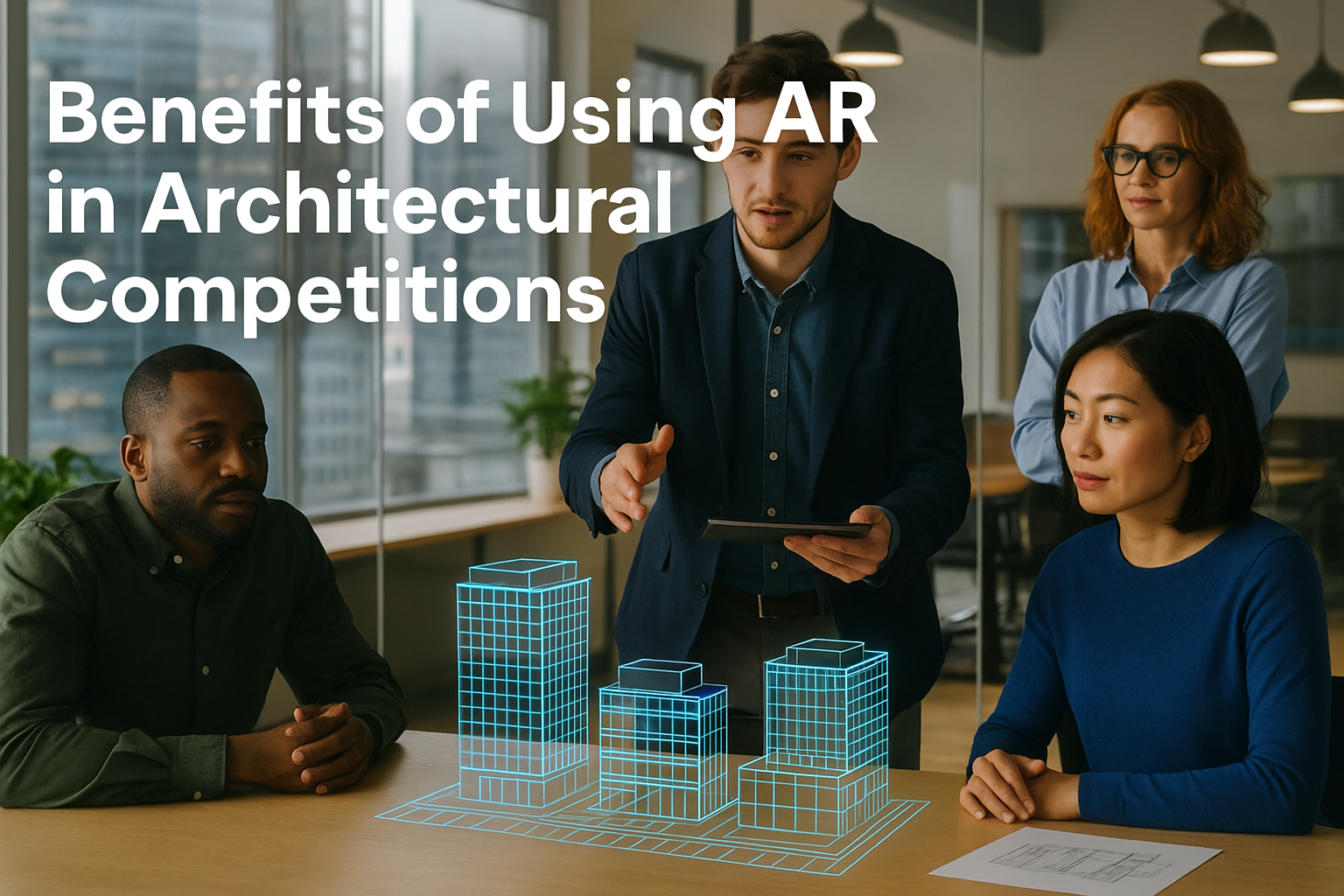AR in architectural competitions is becoming a game-changer for firms aiming to stand out in highly competitive juried design events. Whether you’re submitting for a public pavilion, cultural center, or housing innovation challenge, AR gives your concept a vivid, immersive edge that renders static presentations outdated.
As competitions grow more global and fast-paced, presenting ideas in a way that’s intuitive, interactive, and memorable can make all the difference. Augmented reality is a modern storytelling tool that turns design intent into experience—captivating juries and clients alike.
Why Use AR in Architectural Competitions?
1. Superior Visual Storytelling
Traditional boards and renderings are often limited in their ability to convey spatial experience. AR lets jurors explore your design:
- At human scale
- From multiple perspectives
- With layered options or interactive elements
This creates an emotional connection—key to winning entries.
2. Increased Concept Clarity
AR removes ambiguity by showing form, context, and functionality in real time. Jurors don’t need to “imagine” how the building works; they can see it unfold in front of them, directly over a table or a printed site map.
3. Demonstrating Technical Innovation
AR shows your firm embraces forward-thinking tools. This aligns with the ethos of competitions that seek future-ready design solutions. It also communicates that your team is capable of executing complex, tech-integrated projects.
Best Use Cases for AR in Competitions
Conceptual Urban Design
Large-scale masterplans or district layouts are difficult to communicate in 2D. AR lets jurors “walk” through public plazas, parks, and mixed-use zones, experiencing the project holistically.
Temporary Installations & Pavilions
Many competitions seek ephemeral architecture with high impact. AR helps showcase lighting effects, kinetic elements, and spatial sequences that are harder to explain on paper.
Adaptive Reuse & Historic Sites
AR overlays the proposed interventions directly onto the original structure—providing context-sensitive clarity that is hard to replicate with slides alone.
How AUGmentecture Supports Competition Entries
AUGmentecture helps architects bring their ideas to life through:
- Markerless AR on phones and tablets
- Model switching for design alternatives
- Cloud-based sharing with judges and collaborators
- Easy uploads from SketchUp, Revit, Rhino, and more
There’s no need for specialized hardware. Your submission can be experienced instantly with a link or QR code embedded in your portfolio.
Real-World Example: Cultural Pavilion Finalist
A Berlin-based architecture team submitted their AR-enhanced design for a cultural pavilion competition. Their proposal included a real-time walkthrough, lighting simulation, and alternate façade materials—all viewable via mobile AR.
The jury noted: “This entry stood out for how clearly it communicated both conceptual depth and user experience.”
Read more about architectural competition strategies on ArchDaily →
Tips for Using AR in Competitions
- Prepare both an AR and traditional presentation for accessibility
- Ensure models are lightweight and optimized for mobile
- Use AR to highlight key moments: entrances, spatial transitions, sustainability features
- Test across devices and lighting conditions
Future Outlook: AR Will Be the Norm
As younger juries, digital-native clients, and tech-forward firms shape the field, AR in architectural competitions will become standard—not experimental. Embracing AR now positions your firm as a leader in both design and delivery.
Conclusion
When time is short and the stakes are high, you need tools that speak for themselves. AR in architectural competitions provides the clarity, engagement, and innovation that jurors crave—while showcasing your firm’s forward-thinking ethos.
With AUGmentecture, turning your vision into an immersive story is easier than ever—and might just be the edge that wins the next big project.




